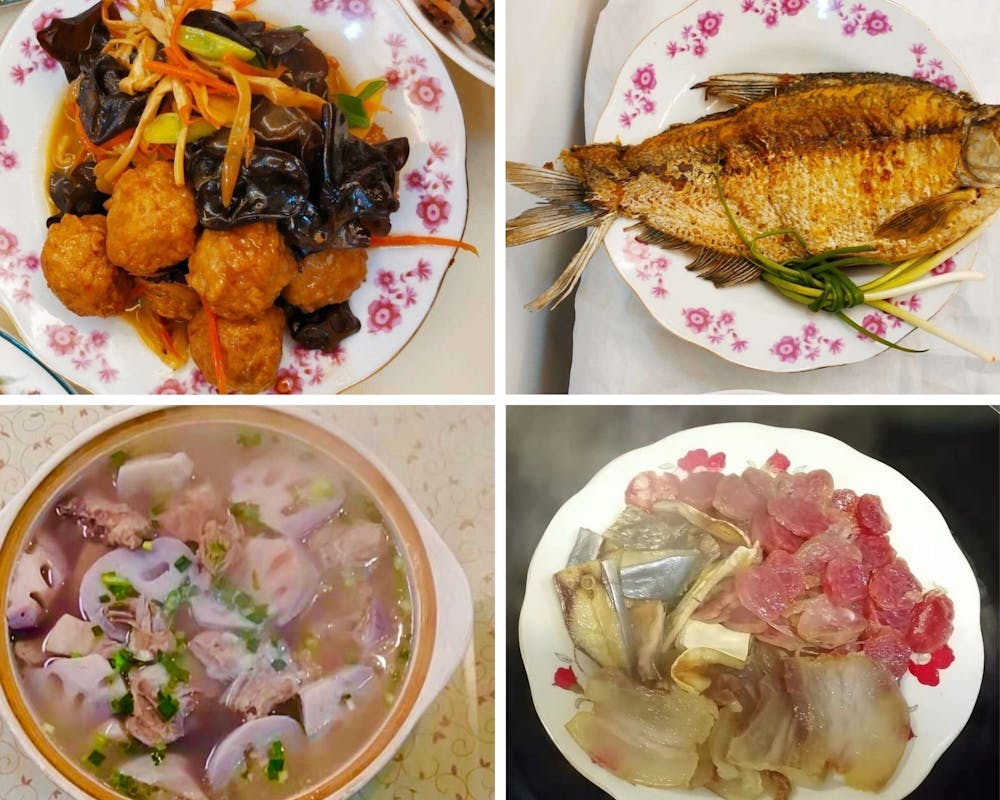Around this time of year, people in China have already immersed themselves in the joyful celebration of the Spring Festival. People are rushing home for a family reunion, especially for those migrant workers who work in the metropolis and may go home only once a year.
The date of the Chinese New Year is not fixed, since it is based on the Chinese lunar calendar. This year, Chinese New Year’s Eve comes Jan. 31 and the next day is the Spring Festival. For me, it’s not only a time to meet my extended family and other relatives, but, more importantly, to have the richest dinner throughout the whole year. In my family, everyone tries their best to contribute to this dinner. It usually has a dozen dishes and takes several days to prepare. All our efforts are for the time when a big family gets together and delivers our sincere hope for the coming year.
Chinese people love to serve food as a symbol for different wishes, behind which are traditions that have been passed down for thousands of years. Here are some must-have dishes in my family for Chinese New Year’s Eve.
- Soup with rhizome of lotus and pork rib
The rhizome of lotus is a specialty in my hometown Wuhan, a city in central China, where hundreds of lakes provide an ideal environment for lotuses to grow. Rhizomes in Wuhan contain a high level of starch and taste very glutinous. Traditionally, my grandmother always used a deep pottery pot to make the soup with rhizome of lotus and pork rib. She said a pottery pot can make the pork rib less oily and has a better thermal insulation performance.
After hours of heating, starch in the rhizome will gradually dissolve in the soup, which gives a rich taste and blends perfectly with pork. The soup is always served as the first dish on our dinner table on Chinese New Year’s Eve. After having a bowl of soup, everyone warms up and has a better appetite for dishes coming next.
In Chinese, the pronunciation of the rhizome is the same as “two” or “even,” which is considered auspicious in traditional Chinese culture. My grandmother told me having a rhizome of lotus means that good things come in pairs in the next coming year. Also, the rhizome contains a special kind of fiber that does not break after people have a bite. There is a Chinese idiom called “roots may break, but the fiber remains joined.” Having a rhizome of lotus on New Year’s Eve implies that the fortune we had will continue in the next year.

2. Fried meatballs
Similar to Americans, Chinese people like meatballs as well. However, Chinese people usually put in a fruit called a water chestnut while making meatballs. It blends well with ground pork and provides a refreshing taste in this heavy dish. The meatballs are always fried golden brown to bring out the best taste. Having this dish symbolizes an increase in wealth for the coming year. Also, the word “round” is pronounced the same as reunion and satisfaction in Chinese. Therefore, round meatballs become a symbol of a complete family and satisfying life.

3. Fried whole fish
Fish is also considered a very important part of the New Year’s Eve dinner table. There is an idiom called “Nian nian you yu” in Chinese, which means that people wish to have a surplus of food and wealth every year. The character “yu” in this idiom is a homonym of “fish.” Therefore, having fish on New Year’s Eve is considered very auspicious.
In my family, we usually have fried fish for decoration, not for eating. We cannot have the fish until the next day to celebrate the spring festival. We believe that having a fish from the year before will bring us great fortune.
Also, while placing the fish on the table, we ensure that the fish head is always facing the oldest person in the family, which is an implication of showing respect and reverence to seniors in Chinese culture.

4. Larou (Chinese style cured meat)
Chinese-style cured meat is my favorite New Year’s Eve dish. It is a plate of pickled pork belly, fish and sausages. The salty taste of all the ingredients pairs perfectly with white rice.
In my family, cured meat can only be made in winter because we need to hang the meat in the cold winter wind for several days to make it drier and improve the flavor. In Chinese, the name of cured dishes always starts with “La” which means the twelfth month in the lunar calendar.
For example, “La rou” means cured meat that is made just before the Spring Festival. Its special name also indicates that cured meat is an indispensable part of New Year’s Eve dinner.

Recalling these dishes on New Year’s Eve makes me reminisce about the days I celebrated the Spring Festival with my family. Food is not just something that makes us feel full and satisfied, but symbolizes the connections between people as well. No matter where we are from, the hope for a family reunion and great fortune is always the same.







